Gardens
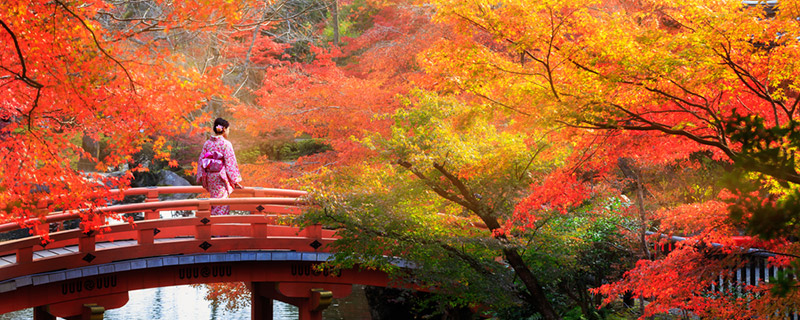
History
Some of the earliest Japanese gardens were built for religious purposes. In many Shinto shrines around the country, the buildings in the complex typically have gardens right next to them, with streams or ponds nearby. Also, upper classes, such as the rulers, lords, and noble families, built gardens in their properties for entertainment and recreational reasons.
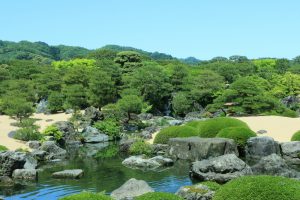
Adachi Museum of Art Garden
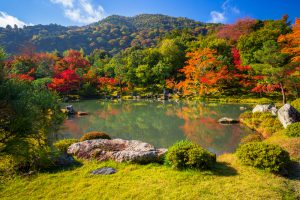
Zen garden of the Tenryu-ji temple
Styles
- Courtyard gardens – These were common during the Heian Period. Palaces back then had big private, interior courtyards that were around 10 square metres in area and consisted of a number of plants, a water basin, a stone lantern, and some stepping stones.
- Dry rock gardens – These rose to popularity in Japan around the 1300s after Buddhist monk Muso Soseki built them at five Kyoto monasteries. They consist of gravel or white sand (instead of water), rocks arranged in patterns, and a few small plants and moss.
- Hermitage gardens – These were typically built by retired officials and samurai who wanted to focus on meditation or a simple life. They were usually found deep in the woods and were home to various plants and a small pond.
- Paradise gardens – These were created to depict the Pure Land or Paradise scene in which the Buddha was seen seated on a platform surrounded by a lotus pond. They feature a small island, which has the Buddha hall, in the middle of a lake, with a bridge that links it to the shore.
- Pond gardens – With a style that originated in China, pond gardens consisted of a large main building, a big lake, several small islands, and a garden. Guests could ride a small boat and cruise in the lake to jump from one island to another.
- Promenade gardens – These arose during the Tokugawa Era at the homes of lords and noble clans. These occupied large areas of land and included a lake, several paths for strolling, different trees and plants, and fences.
- Tea gardens – Built to serve as the venue for Japanese tea ceremonies around the 14th to 17th century, tea gardens welcome visitors in an outer garden that has a gate that leads to a path to the inner garden where they cleanse their mouths and hands before entering the teahouse. The entire area is surrounded only by green plants and trees to resemble the woods.
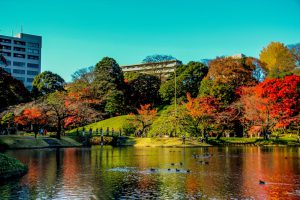
Koishikawa Korakuen
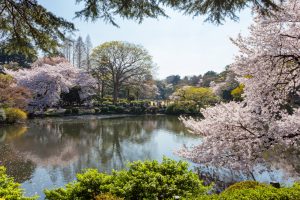
Shinjuku Gyoen national garden
Top Japanese Gardens
Adachi Museum of Art Garden
Founded in 1980, this garden showcases some unique garden art and design. Also, the museum is home to more than a thousand art pieces, ceramics, and other exhibits. It is located about an hour’s train ride from Matsue.
Byodoin
Located in Uji, the Byodoin Temple’s garden is recognised as the best example of the Paradise or Pure Land garden style.
Katsura Imperial Villa
Found in western Kyoto, the Katsura Imperial Villa garden is great for strolling. However, guests who would like to visit are required to make reservations in advance.
Kenrokuen
Consisting of several large gardens, mini-gardens, ponds, hills, streams, tea houses, and pavilions, Kenrokuen is arguably one of the three most gorgeous and impressive landscape gardens in Japan. It is located in Kanazawa and is a popular cherry blossom and autumn leaves viewing spot.
Ryoanji
Best visited early in the morning or late in the afternoon to avoid crowds, Ryoanji Temple’s rock garden is the country’s most famous and revered rock garden. It sees several hundred local and foreign visitors a day.
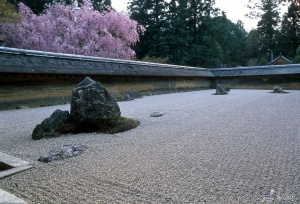
Ryoanji
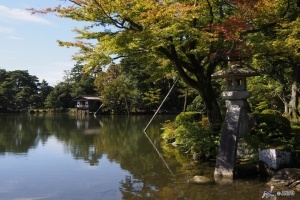
Kenrokuen










